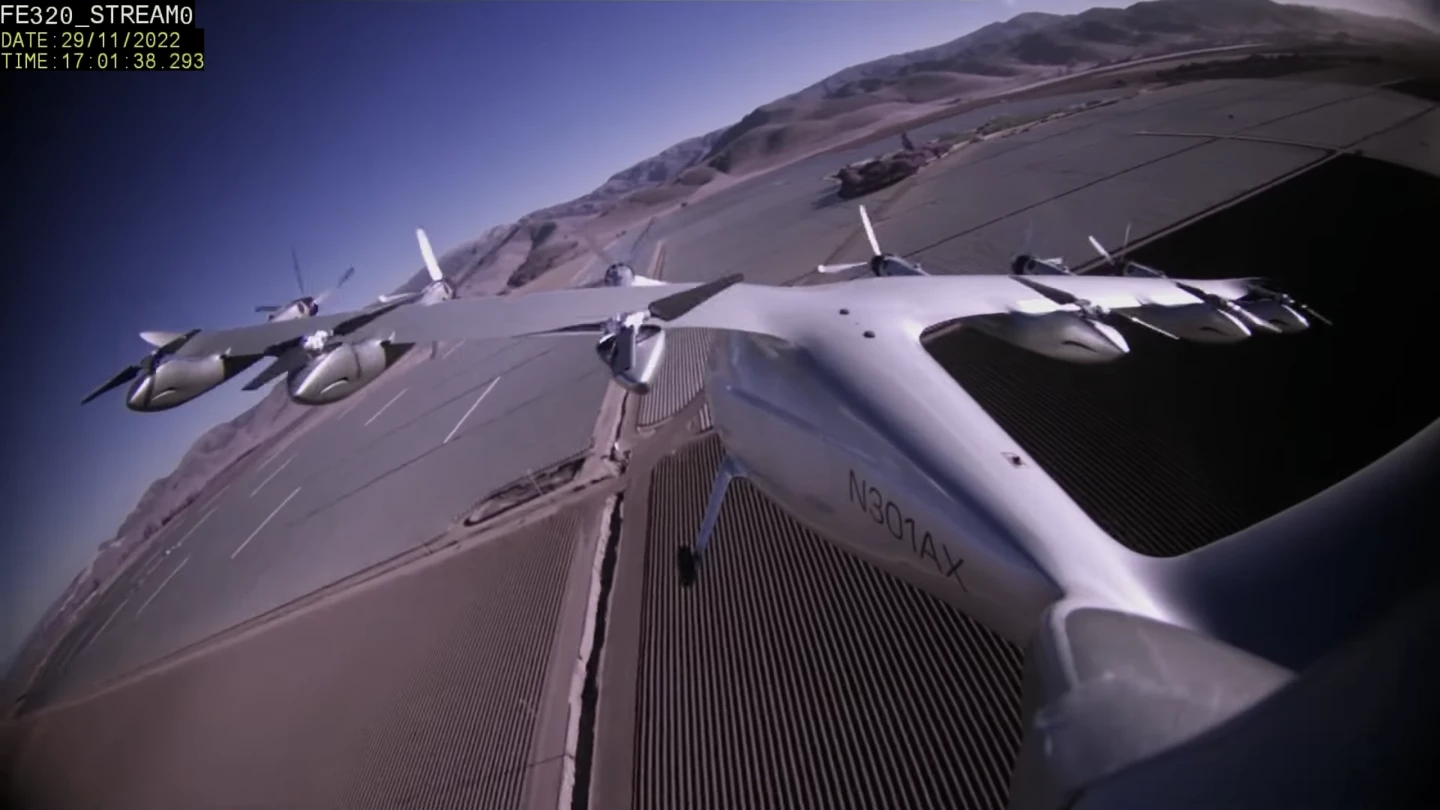There are very few full-size aircraft capable of transitioning between vertical takeoff and landing and wing-borne horizontal cruise flight, so it's a big deal when a company manages the feat, as Archer has now claimed. But the video is a shocker.
Archer is going full speed ahead on expanding its flight envelope, hoping to achieve FAA type certification for its striking five-seat Midnight air taxi by 2024, and to enter service in 2025. Its two-seat Maker prototype has been flying since last December, nutting out the intricacies of multirotor-style takeoff, landing and hover maneuvers.
And now, it's celebrating its first full transition to cruise flight. Archer's design uses a kind of hybrid between vectored thrust and lift-and-cruise style approaches; the Maker's front six props are able to tilt from vertical to horizontal, while its rear six props simply stop when the aircraft is flying fast enough to generate lift from its wings alone. This is crucial to maximizing range out of a battery pack, since winged flight uses only about a third of the energy of multicopter-style flight.

According to Chief Engineer Dr Geoff Bower, the first transition flight was made on Tuesday November 29. This follows several months of inching through the transition phase, increasing airspeed by 10 knots each time and taking lots of measurements to understand the complex aerodynamics in play as the front props change angle, and the resulting airflow interacts with the wing and the rear props.
You can get a sense of the challenge in the simulated image below – these aircraft have to manage dynamic thrust changes through a range of changing airspeeds. It's not a trivial exercise!

For Tuesday's full transition flight, the Maker climbed to around 240 ft (73 m), then accelerated through the transition phase to a fully wing-borne top speed of 91 knots (105 mph/169 km/h), before flying a circuit, then decelerating back through the transition to hover flight, and executing a vertical landing.
"The airspeed at which the tilts reach the cruise position," writes Dr. Bower, "was deliberately designed to be around 90 kts to provide 30% margin above the power off stall speed of 70 kts (minimum airspeed for wingborne flight). Margin from stall speed is required to allow for maneuvering and gusts. This is similar to the typical approach speed of about 1.3 times the stall speed for a conventional airplane."
Archer has celebrated the transition flight with a short video. And frankly, I'm worried it does more harm than good, since it's been edited in pretty much the sketchiest way possible. While several cameras were clearly filming the Maker for the flight, the only shots of the transition portion of the flight look like they were taken with a hand-held phone camera in the cabin, with the wobbly camera pointing upwards such that the shots could well've been taken on the ground. I'm not exaggerating, look:
Good grief. The music, the cutaways to still photos, the angles, everything just screams "we've got something to hide." We asked Archer why it'd release a video like this, and why we couldn't see the whole flight, but were told the team has no comment on the matter at this stage.
To be clear, we've got no reason to think Archer hasn't flown a transition flight, and the video clearly shows the Maker in wing-borne cruise flight. But Archer is approaching a billion dollars in funding, and taking a leadership position in a fledgeling emerging market that's got no shortage of naysayers and short-sellers sniffing around for reasons to doubt that the eVTOL air taxi revolution will take place. I think it's crazy that this video has been released at all.
Please guys, fly it again and release a full video like Lilium has!
Editor's note: The Archer team has told us it has no plan to release additional footage at this time, and explained that this video edit was "intended to make the relatively uninteresting tail cam footage look a little more interesting for our followers at large." The moment that's significant to the engineering team is when all props lock in a fully horizontal orientation. "This moment signifies full transition," says Archer, "and is clearly visible on the film."
Source: Archer







